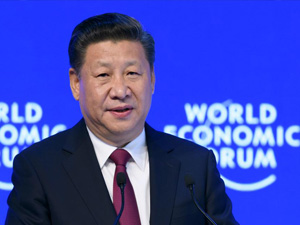 Xi Jinping was the star at Davos, positioning himself as the leader of free market and economic liberalism, making grand statements about international cooperation, encouraging investment and in support of income equality.
Xi Jinping was the star at Davos, positioning himself as the leader of free market and economic liberalism, making grand statements about international cooperation, encouraging investment and in support of income equality.
Xi encouraged foreign enterprises to invest in China and, in order to offer facts in support of words, the State Council yesterday issued a new directive that should relax restriction on foreign enterprises willing to invest into China; in practice, a relaxation of the negative list, probably at both national level and in the various economic free trade zones, as well. On a slightly contradicting note, China is expected to make outbound investments that exceed inbound investment (ODI 750bn vs FDI 600bn, over the next few years). This, per se, is no proof that China’s market is not fully open, still one is left with the doubt that if the economy is strong, restrictions relaxed, opportunities abundant perhaps, just perhaps, FDI into China should exceed an average of 125bn per year. Who knows really. Yesterday, I commented these issues at Rainews24 (click here for video)
[huge_it_video_player id=”22″]
On the issue of income inequality, things are a bit tricky. It is very easy to promote income equality, decreasing disparity and all sorts of social goals which are, indeed, very laudable ones. However, the reality is a bit less ideal. In the case of China, I have always argued, a large proportion of GDP growth is due to input factors, in particular the migratory flow from rural areas to urban areas. Every time a farmer leaves the countryside and moves to the city, his income grows by a factor of 3 and all related infrastructure, real-estate needed to accommodate this migratory flow boost GDP. The problem is that people leave their homes only when the potential income in the cities is higher. In fact, the higher the urban-rural income disparity, the higher is the migratory flow, and the higher is the GDP growth. The three charts below show this phenomenon in a clear way. The leadership then finds itself against a wall: scarify GDP growth in exchange for equality, or keep income disparity high (even higher) in order to support economic growth?



